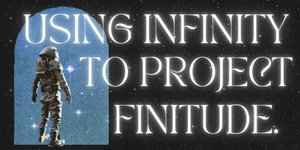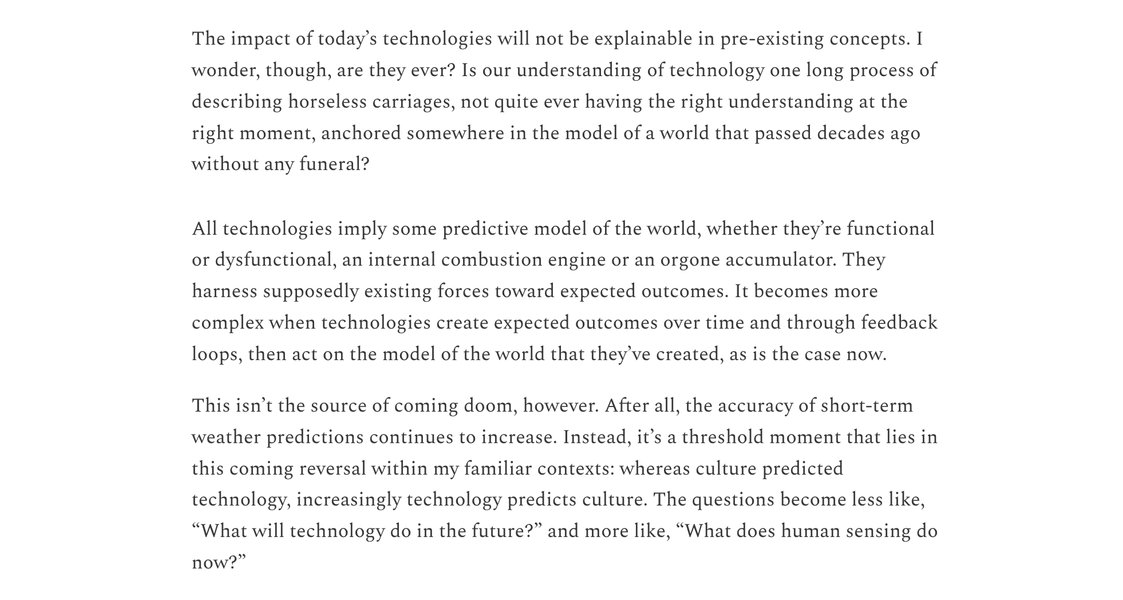aron
@aronshelton
aron
@aronshelton



why curation... and

manifestos and principles and Manifestos
As with any axiom, you believe it or you don’t. If you do believe it, picture an alternate world B in which it wasn’t true. Once you have pictured that world—picture how that world would imagine an alternate world, C, in which it wastrue. Now, compare these three worlds—A, ours; B; and C.


Animating Questions and Humans In The Loop
The questions become less like, “What will technology do in the future?" and more like, "What does human sensing do now?"
The ‘laws of media’ can’t tell you everything about any medium, but it does give us something remarkable: predictability. We know that anything we can come up with will do these four things. It will amplify some part of us. It will make something obsolete. It will bring something back from the past in a new form. It will, when pushed, flip.
... See more